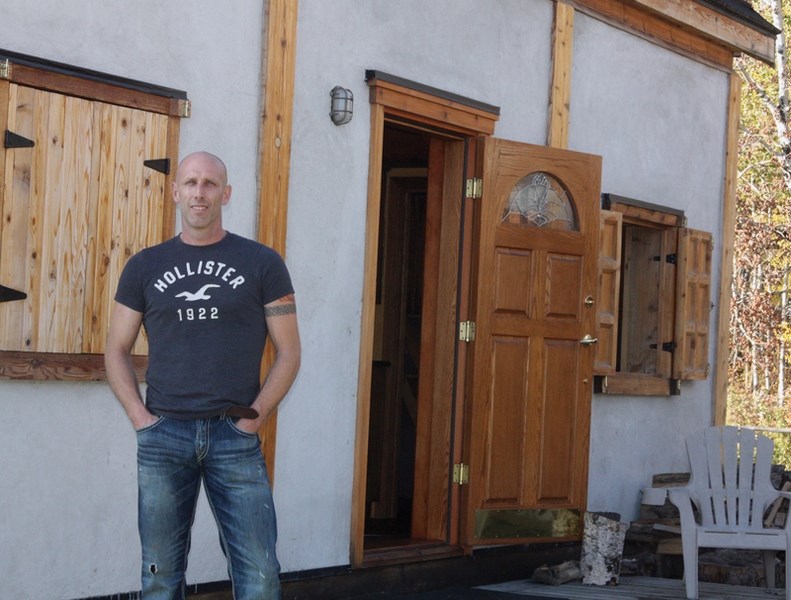An area man behind a tiny house built out of hemp is seeing his idea grow.
Since completing a 350-square-foot home south of Westlock last year using hempcrete — concrete-like blocks made from a mixture of hemp and lime — Dion Lefebvre’s prototype house has gotten traction in B.C. where builders are working with him on creating a tiny hempcrete house in Bowen Island.
“It’s been designed and built following my prototype and it’s going to have CSA (Canadian Standards Association) approval so it’ll be available to the general public,” he said. “That’s actually going to be built with the first precast panel in North America.”
Lefebvre is also working on expanding precast panel production, which is a way to mass-produce hempcrete blocks in a facility, rather than on site like he did with his house.
“Having hempcrete construction is somewhat seasonal so we’ve got elements, especially in Canada, (where) the winter climate is not favourable to pouring hempcrete to say the least,” he noted. “We’ve got to do most of our stuff during the summertime at this stage. Having precast panels really extends our building season into a full year.”
As a result, Lefebvre is collaborating with Hempcrete Natural Building in B.C. — the Bowen Island tiny house builders — and a few other companies to create a production facility in central Alberta.
“It’s a more controlled environment to be able to build with,” he said. “It allows for year-round building, quick, easy construction and erection times, so obviously precast is the goal of the industry. Builders want to build their stuff fast.”
As far as research and development goes, Lefebvre has had to contend with several hurdles when it comes to regulating hempcrete so that is complies with building codes.
“It’s not recognized as a building material with the code writers, so we’ve still got to do some work implementing that,” he said. “We can still build with it; however, it’s got to be engineered from a different angle.”
At this stage, he noted that hempcrete is quite cost competitive since most of the biomass he is using is actually rotting away in fields.
“That’s why the interest is so keen on developing this. We’re basically using a local waste product to build houses. The benefits there are astronomical. Not only is it a waste product, its fire resistant, mould resistant, pest resistant, earthquake resistant.”
Hempcrete is also notable for its heat-retaining properties and low-environmental impact. He noted that materials for an average house could be produced on five-acres of land in one growing season.
As well, aging only strengthens the blocks as the natural fibres petrify over a 30 to 40-year period.
In the meantime, Lefebvre has spent much of his time in meetings with the sustainable permaculture community, net zero housing, Treaty 8 settlements and even representatives from India on the Bowen Island project.
He also recently met with Alberta Agriculture and an associate dean from the Northern Alberta Institute of Technology (NAIT), who showed interest in working with the biofibre and developing hempcrete as a trade down the line.
“I’m excited for the future,” he said. “I think having renewable resource at our fingertips right here, it’s a grown-in-home solution to housing. It’s a grown-in-home solution to the economy. It’s a very material cheap, labour expensive way of building. We can put Albertans back to work. And we can do so with material that’s locally grown.”



